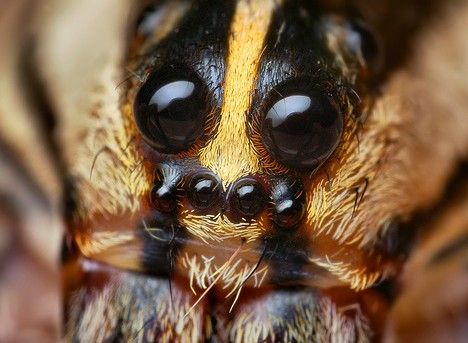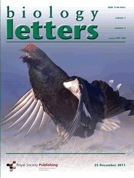
研究人员在复杂的蜘蛛世界里的一个新研究发现,也反映了人类社会的一些类似的行为。当雄狼蛛求偶时,它会偷听它们的情敌,与情敌竞争甚至是试图超越情敌所跳的交配舞。这种行为多出现在脊椎动物身上。
论文的共同作者,艾尔玛学院生物学教授David Clark;俄亥俄州立大学进化、生态和器官生物学系的副教授J. Andrew Roberts和辛辛那提大学生物科学教授George W. Uetz。论文出版在本月《Biology Letters》杂志上。
动物界偷听其他动物的交流是广泛流传的,而这这也是获得信息的一个方法。Clark说,“比如,鸟类、哺乳动物和鱼类的研究发现雄性旁观者观察雄性之间的竞争可以了解潜在对手的优势,而雌性观察者也会复制其他雌性对配偶的选择。”Clark是研究的第一作者和共同研究者。“这项新发现表明雄狼蛛也会监视雄性求偶的视觉信号。”
这些视觉信号包括雄狼蛛轻拍腿的交配舞蹈。作为研究项目的一部分,这些蜘蛛是从野外收集而来,然后实验室放有虚拟的雄蜘蛛视频,视频里,这些虚拟的雄蜘蛛在自然的栖息地上发出求偶信号。Roberts说,“视频重放已经成功地运用在多种动物种类的实验性研究中,包括蜘蛛。” Roberts在辛辛那提大学进行博士后研究。
研究人员发现,提到视觉监视时,经验说了算。 交配季期间,研究人员首次是在森林里观察到这种特质,但因为研究对象是实验室培育(所以很天真)的蜘蛛,所以不能说明结论。而后这些野外收集的蜘蛛或许可以显示在自然界中雄蜘蛛向雌性求偶,结果,如果它们的“情敌”正向附近的雌性求爱时,它们行动了。
据Uetz所说,“之前认为只有脊椎动物如鸟类或鱼类有这种“信号匹配”的行为,研究表明无脊椎动物像蜘蛛可能有我们想象中更为复杂的行为。”我们越近的观察蜘蛛,我们发现它们越复杂——它们学习的能力,记忆力和决策制定都远比我们想象的要好的多。

Eavesdropping and signal matching in visual courtship displays of spiders
David L. Clark, J. Andrew Roberts and George W. Uetz
Eavesdropping on communication is widespread among animals, e.g. bystanders observing male–male contests, female mate choice copying and predator detection of prey cues. Some animals also exhibit signal matching, e.g. overlapping of competitors' acoustic signals in aggressive interactions. Fewer studies have examined male eavesdropping on conspecific courtship, although males could increase mating success by attending to others' behaviour and displaying whenever courtship is detected. In this study, we show that field-experienced male Schizocosa ocreata wolf spiders exhibit eavesdropping and signal matching when exposed to video playback of courting male conspecifics. Male spiders had longer bouts of interaction with a courting male stimulus, and more bouts of courtship signalling during and after the presence of a male on the video screen. Rates of courtship (leg tapping) displayed by individual focal males were correlated with the rates of the video exemplar to which they were exposed. These findings suggest male wolf spiders might gain information by eavesdropping on conspecific courtship and adjust performance to match that of rivals. This represents a novel finding, as these behaviours have previously been seen primarily among vertebrates.








